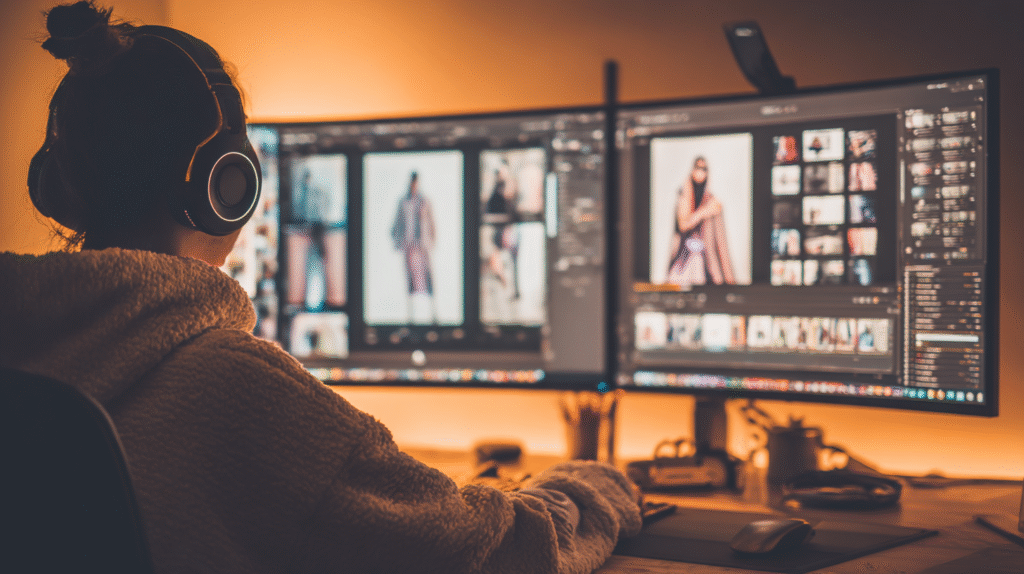
The Year of the Invisible Revolution
There are years in technology when the change feels cinematic — the launch of the iPhone in 2007, for example, or the sudden immersion into Zoom life in 2020. And then there are years when the shift is nearly invisible, happening incrementally until, almost overnight, you look around and realize the world is operating differently.
2025 has turned out to be one of those years in web design. What was once a set of “experimental” tools — AI site builders, code generators, design assistants — has now become the default. According to Webdesigner Depot, 93% of designers now use AI daily and 91% of developers lean on it to write code. When entire industries hit that kind of near-universal adoption, we’re not talking about a “trend” anymore. We’re talking about a new infrastructure.
When Every Designer Has a Second Brain
The most telling statistic isn’t just that AI is present in the workflow — it’s that designers rank AI alongside essential tools like Figma and Photoshop. In other words, it’s not the “fun toy” you test on a Friday afternoon anymore; it’s the co-worker you consult every morning.
One designer I spoke with (off the record, because their agency didn’t want to seem “overly dependent” on AI) said: “I used to spend an entire week moodboarding. Now I sketch prompts on Monday morning and the AI floods me with ten viable directions by lunch. My job isn’t to start from nothing anymore. It’s to curate what’s already halfway there.”
That small detail hints at something important: the job description of web designers is mutating. What customers now pay for is less about pixels and code, and more about judgment, taste, and the ability to pick from an abundance of machine-generated possibilities.
The Problem with the Shortcut
But if AI is a co-creator, it’s also a co-mistake-maker. Developers admit that 59% of them sometimes ship AI-generated code they don’t fully understand, while nearly half worry about security implications. It’s a paradox: the very technology that speeds projects up can also embed vulnerabilities that traditional QA might miss.
I remember last month experimenting with an AI tool that spun out an entire single-page React app in under five minutes. I was impressed, but when I opened the back end, the routing was confusing, the state management was inefficient, and hidden in the logs was a bug that would have crashed the project at scale. The efficiency was dazzling. The sturdiness? Not so much.
What that taught me — and is teaching many developers right now — is that AI isn’t replacing expertise; it’s demanding more of it. You need the vision of an architect, not just the speed of a coder.
A Culture Shift: From “Can AI Do This?” to “Should I Let it?”
There’s an anthropological angle here worth pausing on. In 2020–2022, conversations about AI in creative fields were dominated by questions of capability. Could AI design a logo? Could it generate an interface? Could it write clean CSS? The surprise was often that it could.
By 2025, the conversation has pivoted. The real question isn’t “can?” It’s “should?” Designers and agencies now wrestle with choices about authenticity, originality, and transparency. If you launch a client’s site with a hero image entirely generated by Midjourney 7.0, is that acceptable? Does the client know? Should they know?
The growing ethic inside creative teams is: use AI, but acknowledge it. A kind of “fair trade” seal is emerging — the idea that AI can build fast and cheap, but human guidance needs to remain visible. The industry hasn’t landed on a consensus yet, but the norm is moving in that direction.
Why This Matters for Content Creators and Entrepreneurs
For business owners and content creators — the ones who may not live and breathe CSS grids or flexbox bugs — the implications are enormous. 67% now prefer launching their site with AI builders rather than purely human-coded options. That’s a leap in accessibility. The gate to professional-grade design has swung wide open.
But there’s an irony here. The very abundance of AI creation means that differentiation gets harder, not easier. If everyone can spin up a “sleek, modern, mobile-friendly design” in minutes, then the only way to stand out is to add a human fingerprint: sharper copy, messier stories, more original imagery, ideas that algorithms can’t quite anticipate.
And maybe that’s the positive spin on this whole revolution. In a world remade by automation, creativity becomes scarcer, and therefore more valuable.
Closing Thought
We talk endlessly about replacement when AI enters a field. Did it replace the designer? Did it replace the developer? But reading the 2025 data, and talking to practitioners, what stands out is not a story of elimination, but of reorientation.
AI didn’t exit humans from the design room. It moved our chairs to a different part of the table, where what’s required from us is taste, critical judgment, and human imagination. In other words: less sidekick, more co-pilot.
